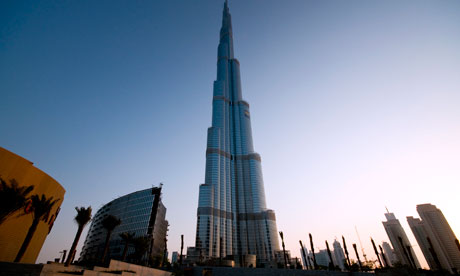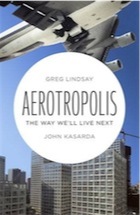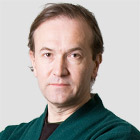
The old city is no more. The future belongs to places such as New Songdo in South Korea, a wholly new city being built on an artificial island and linked by road bridge to Incheon international airport. And to 500 cities of the same size, as yet unborn, that China needs. And to Memphis, Tennessee, home of Fedex, and the UPS city of Louisville, Kentucky.
These, says Greg Lindsay, showing a suitably 21st-century indifference to the ancient Greek plural of "polis", are "aerotropoli". An aerotropolis is a city with an airport at its centre, rather than its periphery, "a new kind of city, one native to our era of instant gratification – call it the instant age". It is "a new phenomenon… reshaping the way we live and transforming the way we do business". Cities such as London, forever dithering over a third runway at Heathrow, and Los Angeles, where nimbies keep blocking the expansion of LAX, and New York, with sclerotic links from the city to its airports, are in trouble.
Lindsay is a journalist fascinated by air travel. His co-author is John Kasarda, a business school professor with presumably lucrative consultancies telling countries, cities and businesses how to prepare for this new age. Lindsay wrote and did much of the exploration for Aerotropolis; Kasarda supplied much of the wisdom.
The book tells how the world is rearranged by the logic of time, distance and cost. In 1974, for example, the Japanese Airlines executive Akira Okazaki used the spare capacity on cargo flights to fly whole chilled tuna around, leading to the world-wide consumption of sushi, with the result that bluefin tuna is now endangered in the Gulf of Mexico and the Mediterranean. When political protests closed Bangkok's Suvarnabhumi airport, hotels ran out of imported milk and fish, but filled with orchids that could no longer be flown out.
I have to say, I have heard much of this before: in Martin Pawley's Terminal Architecture of 1998, in Rem Koolhaas's S,M,L,XL(1995), in Deyan Sudjic's The 100 Mile City (1993), in Marc Augé's Non-Places (1992), in the writings of JG Ballard, even in Alexander Korda's 1936 film of HG Wells's Things to Come. Despite all this historic futurology, there seem to be quite a lot of boring old cities around still doing reasonably well. The really interesting question is why the true aerotropolis, despite compelling reasons for its existence, is taking so long to get off the ground.
The examples cited in the book are not completely convincing, and form an unintentional anti-prospectus for Kasarda's consultancy business. There is the city that was to be built next to Bangkok's airport, with advice from Kasarda, but didn't happen. Reunion, a development close to Denver international airport, "a community specifically created for the pursuit of happiness", ended up with one of the highest foreclosure rates in the region. Wilmington, Ohio, lavishly wooed DHL with public money, only to be dumped when the company's profits went the wrong way. Memphis, despite the blessing of Fedex, "still has a long way to go". There is the growth around Washington's Dulles airport, which owes as much to vast contracts from the Pentagon as to the airport. There is Dubai.
It is hard, yet, to find a true aerotropolis, a thriving, rich city formed around an airport, outside the promotional spiels that promise New Songdo will be "A cool city! A smart city!". Human factors, such as the fear of planes falling on your head, or attachment to a place, or political manoeuvring, or the persistence of non-aeronautic networks, counteract that other human factor, the desire for eye-contact, which seems to drive the immense machinery of air travel.
The less spectacular truth is that cities have always relied on transport, but not on transport alone. Airports are a powerful force among others, and it is the interaction of these forces that makes cities interesting. Aerotropolis is straining too hard to be a smartypants bestseller of the the type produced by Malcolm Gladwell to explore this complexity. It is hectoring, breathless, over-persuading, a boring book with an interesting one struggling to get out. And it undermines itself in the authors' biographical note: Lindsay lives not in Memphis or any other aerotropolis, but in Brooklyn, in the dinosaur city of New York – not, presumably, because of its airports.
- Aerotropolis: The Way We’ll Live Next
- by John Kasarda, Greg Lindsay

- Buy it from the Guardian bookshop
Lindsay is a journalist fascinated by air travel. His co-author is John Kasarda, a business school professor with presumably lucrative consultancies telling countries, cities and businesses how to prepare for this new age. Lindsay wrote and did much of the exploration for Aerotropolis; Kasarda supplied much of the wisdom.
The book tells how the world is rearranged by the logic of time, distance and cost. In 1974, for example, the Japanese Airlines executive Akira Okazaki used the spare capacity on cargo flights to fly whole chilled tuna around, leading to the world-wide consumption of sushi, with the result that bluefin tuna is now endangered in the Gulf of Mexico and the Mediterranean. When political protests closed Bangkok's Suvarnabhumi airport, hotels ran out of imported milk and fish, but filled with orchids that could no longer be flown out.
The authors address obvious counter-arguments. They do not accept that electronic communication will reduce demand for flying, instead pointing out that increased communication and increased travel have always gone together. If people make friends through Facebook, they may want to fly to meet up. Amazon stirs up a whirl of airborne goods, and business deals arranged by email need eye-contact and handshakes to be consummated. As for ecological objections, they argue that air transport causes a relatively small proportion of emissions. Roses imported to Britain from Holland, for example, are far more carbon-hungry than those from Kenya, because the hothouses and fertiliser needed to grow them outweigh the savings on fuel costs.
Aerotropolis also describes the kinds of space formed by flight, the concourses and hubs that Douglas Coupland called "an in-between place, a 'nowhere', a technicality… an anti-experience… like what happens to you just after you die and before you get shipped off to wherever you're going… pure neutrality made concrete". The patron saint of such places is George Clooney, as the flying, heartless, corporate assassin in Up in the Air. Walter Kim, author of the book on which the film was based, has contributed a plug for the front cover of Aerotropolis. "Throw out your old atlas," it says. "The new one is here."I have to say, I have heard much of this before: in Martin Pawley's Terminal Architecture of 1998, in Rem Koolhaas's S,M,L,XL(1995), in Deyan Sudjic's The 100 Mile City (1993), in Marc Augé's Non-Places (1992), in the writings of JG Ballard, even in Alexander Korda's 1936 film of HG Wells's Things to Come. Despite all this historic futurology, there seem to be quite a lot of boring old cities around still doing reasonably well. The really interesting question is why the true aerotropolis, despite compelling reasons for its existence, is taking so long to get off the ground.
The examples cited in the book are not completely convincing, and form an unintentional anti-prospectus for Kasarda's consultancy business. There is the city that was to be built next to Bangkok's airport, with advice from Kasarda, but didn't happen. Reunion, a development close to Denver international airport, "a community specifically created for the pursuit of happiness", ended up with one of the highest foreclosure rates in the region. Wilmington, Ohio, lavishly wooed DHL with public money, only to be dumped when the company's profits went the wrong way. Memphis, despite the blessing of Fedex, "still has a long way to go". There is the growth around Washington's Dulles airport, which owes as much to vast contracts from the Pentagon as to the airport. There is Dubai.
It is hard, yet, to find a true aerotropolis, a thriving, rich city formed around an airport, outside the promotional spiels that promise New Songdo will be "A cool city! A smart city!". Human factors, such as the fear of planes falling on your head, or attachment to a place, or political manoeuvring, or the persistence of non-aeronautic networks, counteract that other human factor, the desire for eye-contact, which seems to drive the immense machinery of air travel.
The less spectacular truth is that cities have always relied on transport, but not on transport alone. Airports are a powerful force among others, and it is the interaction of these forces that makes cities interesting. Aerotropolis is straining too hard to be a smartypants bestseller of the the type produced by Malcolm Gladwell to explore this complexity. It is hectoring, breathless, over-persuading, a boring book with an interesting one struggling to get out. And it undermines itself in the authors' biographical note: Lindsay lives not in Memphis or any other aerotropolis, but in Brooklyn, in the dinosaur city of New York – not, presumably, because of its airports.


No comments:
Post a Comment